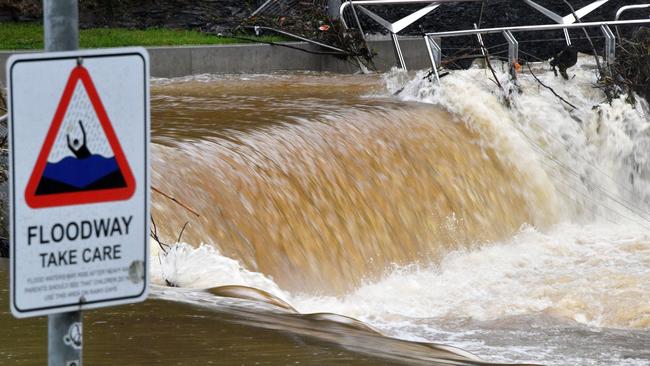Let this sink in: we need to stop wasting our groundwater

After the deluge, where did all the water go? Homeowners will tell you it poured through their houses. Drivers will say the roads. Most of it will run out to the sea. But some of it will stay with us, sinking into the soil and recharging our aquifers.
How much? No one really knows. And that’s a problem.
The Productivity Commission is undertaking a review into the National Water Initiative, the blueprint for water reform agreed by the federal, state and territory governments in 2004. The commission’s draft report recommends the creation of national planning, market and regulatory systems for groundwater. It says nothing about data.
Hard data about groundwater is in short supply. For example, the government’s CSIRO research institute estimates that out of all the water that falls on Australia, 9 per cent runs off to the sea, 2 per cent sinks into the ground and a whopping 89 per cent evaporates to fall again another day.
That sounds pretty definitive — until you start tracking down the references. When you do, you find the Bureau of Meteorology warning you about “the limited amount of quality-controlled data”. Groundwater recharge is, in fact, modelled as a residual: measure the rainfall, estimate the evaporation and run-off, and whatever’s left must have sunk into the ground.
When even that’s too difficult, water managers just assume that 2 per cent of rainfall makes its way into the ground, and call it a day. Needless to say, that’s not a very dependable way to measure groundwater recharge. The BoM helpfully explains that although most aquifers are in long-term decline, higher than average rainfall can recharge them. Well, it’s a start.
Eastern Australia is famously home to the Great Artesian Basin, reputedly the largest artesian aquifer in the world. Artesian aquifers are especially useful because they hold groundwater under pressure, meaning that little or no pumping is required to bring water to the surface. The West Australian coast also sits atop productive artesian aquifers.
The viability of the Great Artesian Basin is often said to be threatened by overexploitation, and it does seem to be the case that water pressure has fallen in particular boreholes. But how much water is left? Where is it? And crucially, how quickly can it recharge? Without systematic data collection, the answers are no better than shots in the dark.
Near-surface groundwater is also sloshing around in the soil right under our feet. It feeds many of Australia’s rivers, which counterintuitively draw on water seeping in through their porous banks. That’s why they don’t just dry up when the rain stops. That includes (to an unknown extent) the Murray and Darling rivers.
Australia spent $13bn on the Murray-Darling Basin Plan to manage the flow of these river systems before ascertaining how much of their water comes from the ground. The Murray-Darling Basin Authority finally is formulating regional groundwater management plans — 14 years late. And even these don’t always involve new data collection.
Australia does have the $450m National Groundwater Information System, but in the end it’s just a database. It relies on data from borehole monitoring, which is primarily a state and territory responsibility. Given that some of those boreholes are up to 60 years old and there is no co-ordinated effort to drill new ones, the data is highly suspect.
The maps produced by the NGIS look impressive to the non-specialist. But the results of statistical modelling are only as good as the data on which they are based, and the data in this case is pretty shaky. In other words: garbage in, garbage out.
Before Australia sets up yet more plans, markets and regulations to govern groundwater exploitation, it needs better data. Data collection should have been the first step in setting up the National Water Initiative. Luckily, groundwater moves even more slowly than Australia’s bureaucratic machinery. There still may be time to catch up.
Salvatore Babones is an associate professor at the University of Sydney.


This month, nature gave the dry continent a good soaking. Sydney has had nearly 400mm of rain and counting. That’s more than three times the monthly average. Perth has already copped twice its monthly average for March. Even Alice got a dousing.